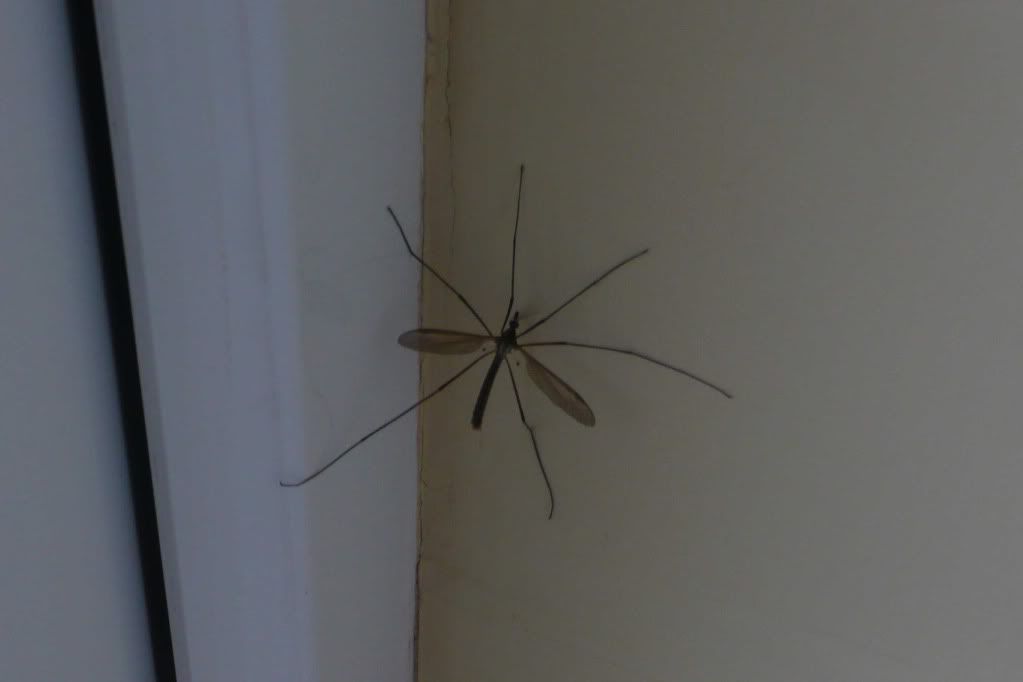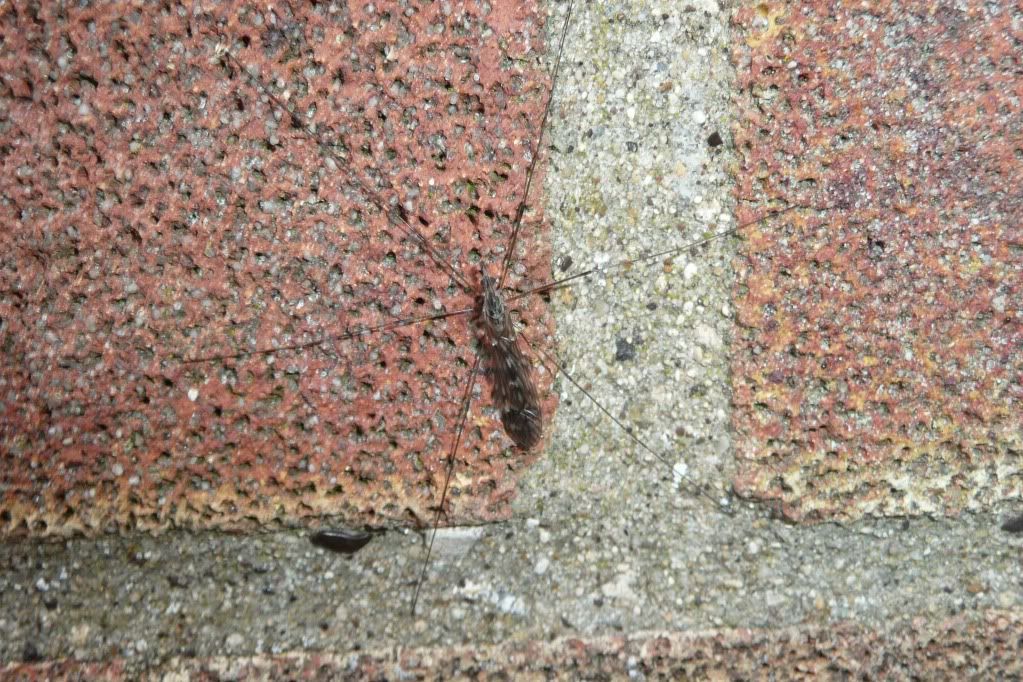Although they can be seen in summer, one of the obvious signs of autumn is appearance of crane-flies. Having spent the past 12 months as larvae (known as leatherjackets) living under soil and eating the roots and stems of grasses (much to the annoyance of many gardeners) they emerge in their adult form in early September and can often be seen up to the first frost of the year.
Crane-flies are the family Tipulidae and there are over three hundred different members - their distinguishing features being the long abdomen and a V shaped grove on the thorax.
They range in size from the mosquito sized to the classic 'daddy longlegs', like this Tipula Maxima residing on our patio door:
.
.
Another common variety is what seems to be a 'spotted crane fly', with it's wings folded rather than outstretched. Unfortunately, unlike butterflies there are no well illustrated field guides to crane-flies, so please correct me if I've miss-identified).
Correction: This is not actually a crane-fly, but a member of the Limoniidae family (possibly Limonia nebeculosa) Thanks to Wild About Britain for the identification.
.
.
Unlike some adult insects (mayfly, for example) crane-flies do have mouth parts and can feed on nectar, but quite often they will breed and die without feeding.
This blog post actually has been an ordeal to write as I have a profound fear of crane-flies. Hence the title,only two pictures and a complete lack of macro photographs - when I was young I couldn't even look at a picture of one.
I had hoped taking photographs and researching would help me understand and appreciate them and although I no longer have panic attacks, I still absolutely loath the creature.


No comments:
Post a Comment